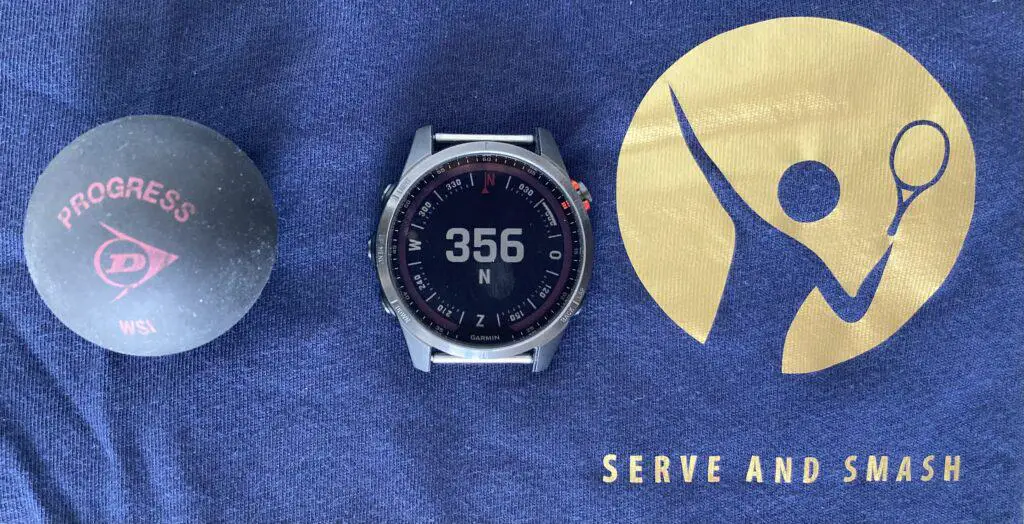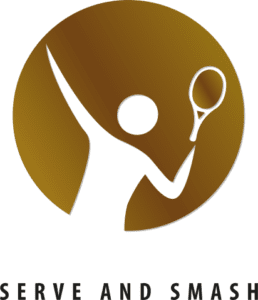This post may contain affiliate links.

When you think about squash, it is actually amazing how a fast-moving game can be played effectively in such a small space. Only strength or speed is not going to cut it in squash, so let’s look at why coordination is key for a good squash player.
Coordination enables the squash player to watch, anticipate and hit the ball optimally, while maneuvering the body according. Besides, coordination is a precondition for successfully implementing any squash tactics, making it a crucial ability.
The short answer does not allow us to dive into the specifics and provide more contextual background. Therefore, after going through the definition, we will go over the different elements that build up the case why coordination is crucial for good squash players. Finally I have some drills to practice your coordination.
The definition of coordination
First of all, how do we define coordination? Coordination is the ability to move all of your body parts together as one. Imagine all parts involved in sprinting, turning, lunging and of course swinging your racket. Add to that the speed the ball moves across the court and watching the trajectory of the ball. You get the picture, right?
You are constantly running, maneuvering, which makes it a very tough sport. One of the physiological abilities required in squash is coordination. I also quickly touched upon this ability while answering the question: how tough is squash as a sport . In that article, I also discussed the other physiological abilities
. In that article, I also discussed the other physiological abilities required in squash. With that being said, coordination deserves some more explanation, that is why we focus here on why coordination is important in squash.
required in squash. With that being said, coordination deserves some more explanation, that is why we focus here on why coordination is important in squash.
Coordination as the precondition to implement squash tactics
Because of the fact that the ball moves fast across the court, you need to ensure you position yourself strategically. If you want to know more, definitely check out this article where I cover these strategic tips . It will make you more aware of your movement patterns during the match.
. It will make you more aware of your movement patterns during the match.
Being able to position yourself strategically is one, but being able to take the predictability out of your returns makes you an even better player. If you can master your ability to handle your racket and return the ball in any corner you want, allows you to progress as a player. Being unpredictable (towards your opponent) in your return is one of the tips to improve your return .
.
In squash, you need to watch and anticipate the movement of the ball, position yourself and be able to hit the ball. Proper coordination is needed to ensure you are not tripping over your own feet while positioning and anticipating the movement of the ball. Without coordination you cannot control your body properly, this makes coordination the precondition for successfull implementation of any squash tactic.
Timing requires coordination
Another aspect of coordination is timing of your shot , that allows you to hit the ball at the best possible height or from the best possible angle. Timing is important, since if you take the shot too early or too late, you are not able to hit the direction you want. Hitting alone is not sufficient, you want to hit the shot with sufficient power. Generally, beginners tend to take the ball too early and too high, since they might be afraid of not being able to hit it in time before it reaches the floor. If you posses good coordination you know you are able to hit the shot just before it hits the floor and not be too early or too late.
, that allows you to hit the ball at the best possible height or from the best possible angle. Timing is important, since if you take the shot too early or too late, you are not able to hit the direction you want. Hitting alone is not sufficient, you want to hit the shot with sufficient power. Generally, beginners tend to take the ball too early and too high, since they might be afraid of not being able to hit it in time before it reaches the floor. If you posses good coordination you know you are able to hit the shot just before it hits the floor and not be too early or too late.
Did I early mention timing is important? Besides timing your shot, you need to be at the right place at the right time. If you are too early at the place where you will hit the ball, you may need to correct your positioning. This would mean either altering your upper body or stepping back in order to make the shot. As a result, you can’t put your weight behind the shot properly and are unable to hit the ball with power or direction towards the front wall. Of course, if you are too late to position yourself, you are also unable to hit the ball with sufficient power and direction.
All these actions need proper coordination. Your legs, arms and body needs to work in conjunction in order for it all to work like the machine you are. Like with any set of highly interdependent actions, if one is not working, it impacts the related actions as well.
Is coordination the linking pin between physiological abilities?
If you are not convinced that coordination is the linking pin, I have got you covered. Another physiological ability that is tightly connected with coordination, is agility. Agility is the ability to quickly react rather than just quickly moving. Quickly reacting and maneuvering request the need for all body parts to work together. For agility to work, you need coordination. But not only that, we need to factor in balance as well. It might seem obvious, but balance allows you to remain standing even if your body is imbalanced. In order to correct this imbalance (during a movement) the muscles in your core need to work. If your body parts work correctly together you are also more likely to be balanced.
As the match progresses, you are likely to get exhausted. The better shape you are in (to play squash), the better your endurance level. Endurance is important to keep going, rally after rally. It will also aid you in being able to focus on the rally at hand, and not how tired you are. That is why coordination becomes increasingly important once you get more exhausted. If you are exhausted, you are more likely to make mistakes due to lack of focus or lack of muscle strength. As you may have experienced, you are more likely to trip over your own feet if you tired, being it in squash or not.
Without coordination you cannot control your body properly, this makes coordination the precondition for successful implementation of any squash tactic.
Coordination drills
These two drills allows you to to start practicing you coordination skills and increase the difficulty while progressing.
Throwing the squash ball on the ground and try to catch it as it bounces. This excercise allows you to anticipate the bounce and work on your hand-eye coordination. Seems easy right, but note that when the ball is cold it won’t bounces as much as when it is warmed up. Probably you need to throw harder than you would when you throw a tennis ball for example. If you are then still unable to catch the ball continuously, you can switch it for a tennis ball or even a bouncy ball.
If you are able to easily catch the squash ball, let’s increase the difficulty by trying to catch the ball after someone hits or throws it against the wall. Of course this needs more precision from the throwing/hitting player. Start by standing closer to the wall and increase the distance as you progress and it is getting too easy.
Good luck and remember, coordination is key for any good squash player!

